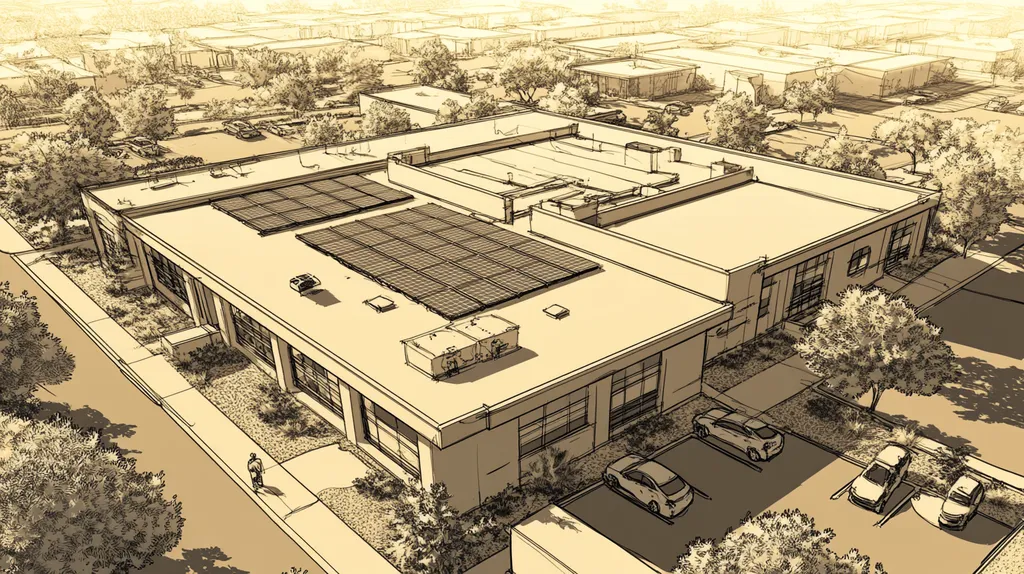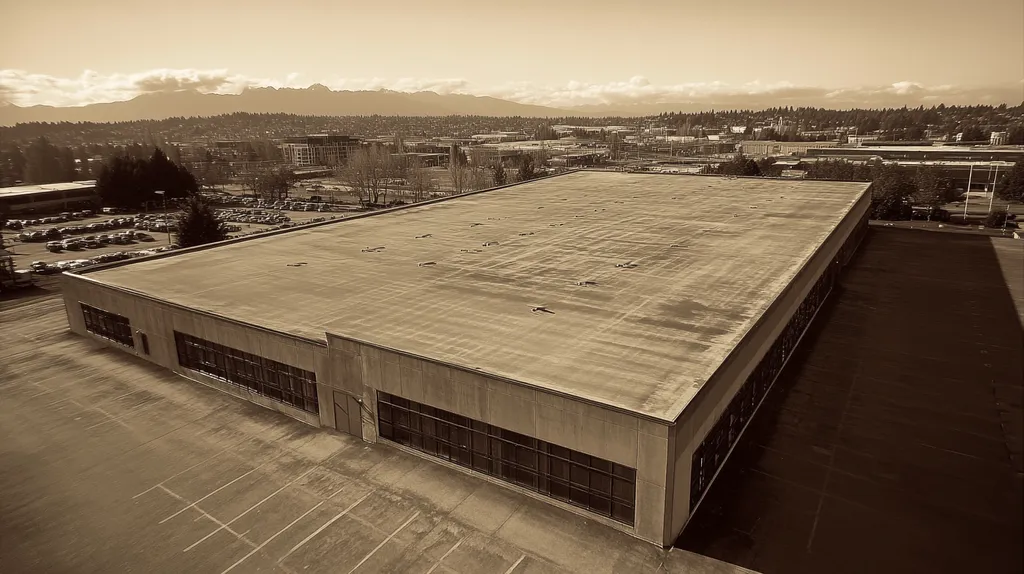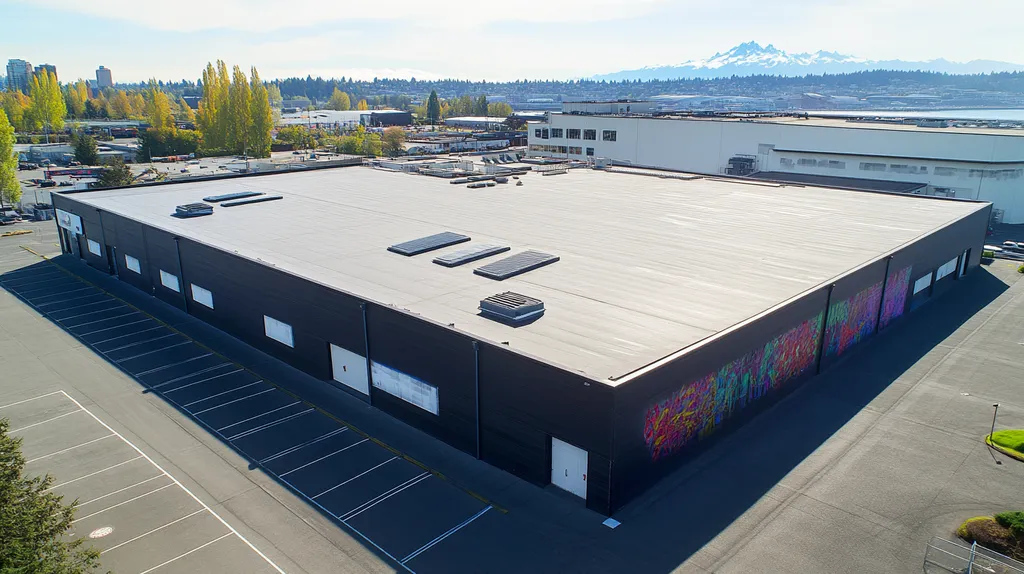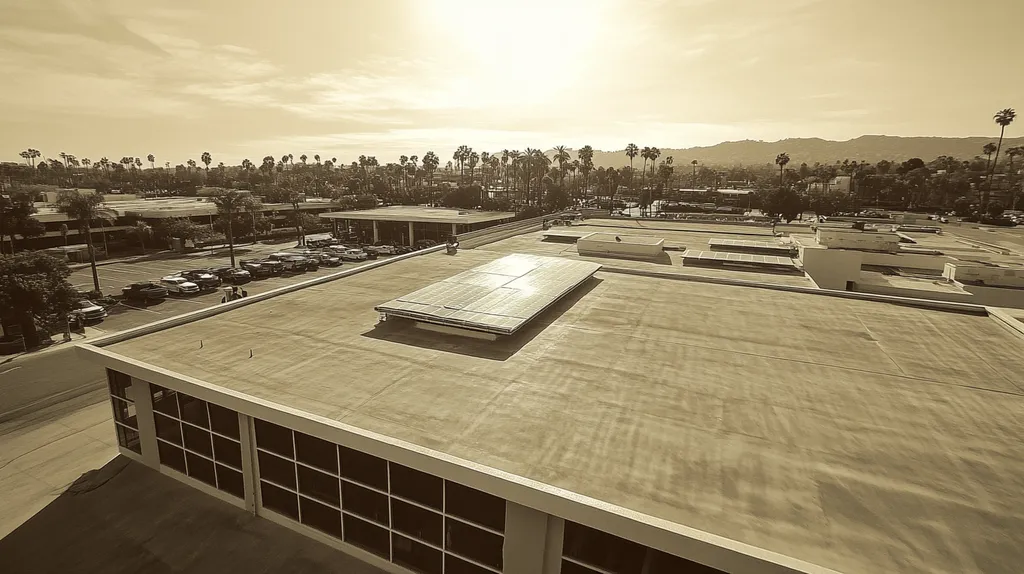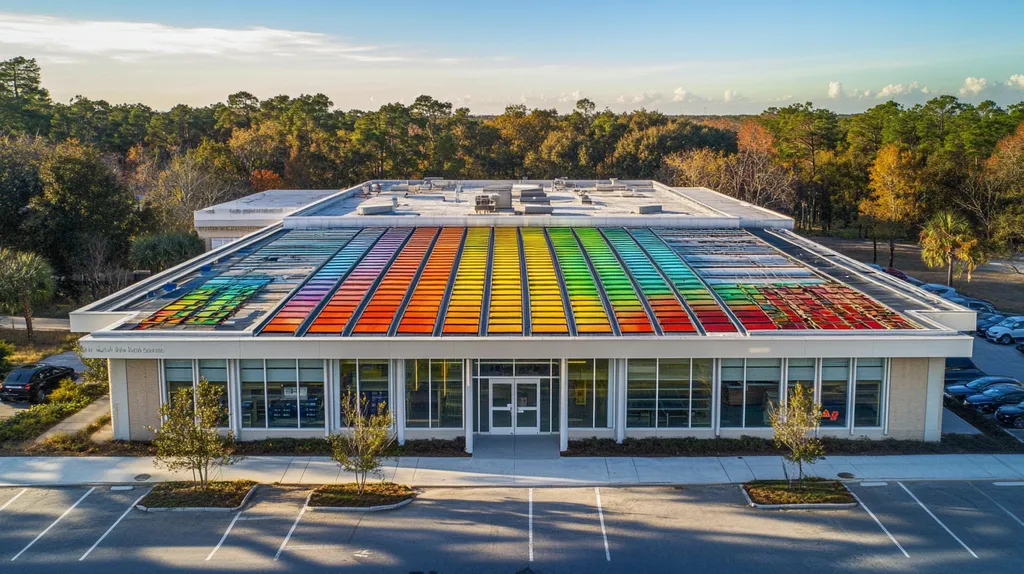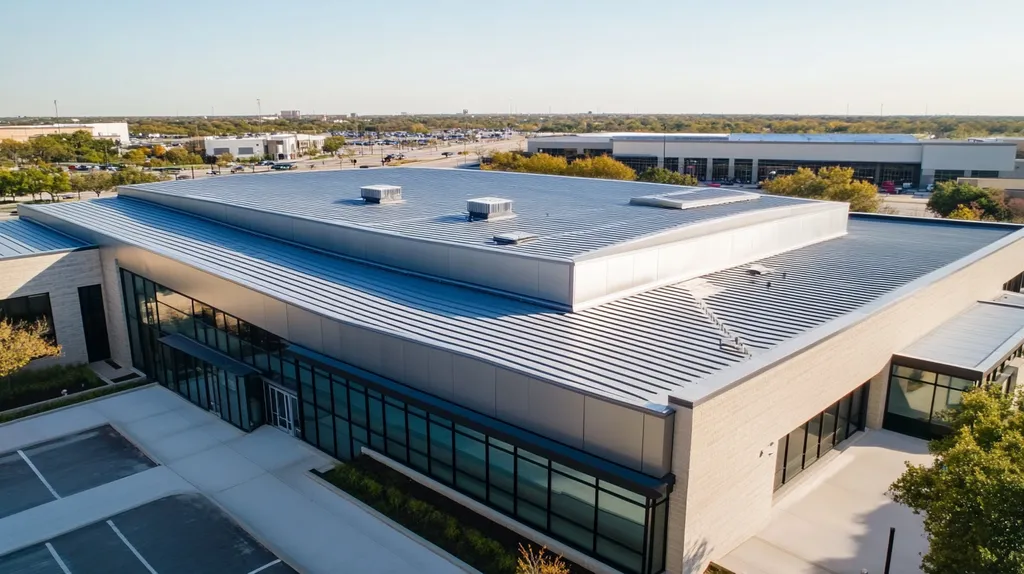Industrial roof coatings represent a $2.8 billion market in 2023, yet research shows that 47% of commercial property owners make costly decisions based on misconceptions about these systems.
The financial stakes are significant: poorly managed industrial roofs can increase energy costs by up to 30% and reduce building asset values by as much as 40%.
This analysis examines six critical factors affecting return on investment for industrial roof coatings, from common myths that lead to expensive mistakes to evidence-based strategies for maximizing coating performance.
Understanding these elements is essential for property owners and facility managers seeking to protect their investments while optimizing building efficiency.
SECTION 1: COMMON MISCONCEPTIONS
The industrial roofing sector is filled with misconceptions that can significantly impact the financial and operational choices of property owners. Misunderstanding the nature of roof coatings can lead to costly mistakes and unnecessary expenses. Research indicates that as many as 30% of facility managers incorrectly view coatings as nothing more than paint. It’s essential to address these misunderstandings to maximize the return on investment (ROI) for industrial roofing systems.
Roof Coatings Are Just Paint
Many property owners simplify roof coatings as mere paint, but this perspective is misleading. Unlike regular paint, roof coatings are formulated with advanced polymers and specific additives designed to enhance durability and performance. For example, certain coatings can reflect harmful UV rays, leading to energy cost reductions of up to 30% compared to traditional roofing options.
Moreover, roof coatings provide superior waterproofing capabilities, a feature not achievable with standard paint. This distinction is crucial, as coatings not only protect the roof from leaks but also extend its lifespan by safeguarding it against the elements. By underestimating coatings as simple paint, property owners risk overlooking significant long-term benefits and potential cost savings.
Investing in a high-quality roof coating can yield substantial long-term savings, making it a more economically viable choice than routine maintenance or complete roof replacement. By recognizing the advanced technology behind these coatings, building owners can make more informed decisions that enhance both value and lifespan of their roofing systems.
In conclusion, categorizing roof coatings as basic paint limits their appreciated efficacy and overall effect on ROI. Property owners should familiarize themselves with the innovations in roofing coatings to fully harness their roof’s capabilities.
Coatings Are Only for Old Roofs
Another prevalent myth is that roof coatings are suitable only for aging roofs. In reality, coatings can be advantageous for a wide variety of roofs, including those that are still relatively new. Applying a roof coating early on can provide formidable protection against adverse weather and enhance energy efficiency, regardless of the roof’s existing condition.
Property owners can greatly benefit from coating newer roofs to improve their functionality from the start. This proactive measure not only prolongs the roof’s life but also curtails potential maintenance issues in the future. Overlooking this option can lead to more expensive repairs or even premature roof replacements.
Furthermore, coatings contribute to sustainability efforts and compliance with new building codes that emphasize energy efficiency. With rising regulations surrounding energy use, coatings can help meet these standards without necessitating a full roof overhaul. This is especially advantageous for properties pursuing LEED certification or other green building accolades.
By shifting the perception that coatings are only for older roofs, property owners can harness their versatile applications to boost performance and ROI right from the installation. Recognizing this potential expands the opportunities for effective roof management.
Coatings Are a Temporary Fix
The belief that roof coatings are merely short-term solutions undercuts their long-lasting value. While some may consider them a quick fix, advances in coating technology have transformed them into robust options for extending roof longevity. Many contemporary coatings come with warranties of 10 years or more, validating their reliability and effectiveness.
Coatings form a seamless barrier that is both adaptable and durable. They can endure extreme conditions, from heavy rains to harsh sunlight, significantly reducing the frequency of required repairs. This resilience lowers maintenance costs and minimizes business disruptions.
Additionally, coatings can be reapplied, presenting a sustainable long-term option that delays the need for full roof replacement. This flexibility is invaluable for property owners looking to strategically manage expenses while maximizing the lifespan of their roofing investments.
Ultimately, dismissing coatings as temporary solutions undermines their essential role in a comprehensive roofing strategy. Recognizing their durability and effectiveness leads to wiser investment choices that enhance the overall value of the property.
SECTION 2: PRACTICAL IMPLICATIONS
The choice to invest in industrial roof coatings goes far beyond visual appeal; it significantly impacts operational efficiency and financial performance. Buildings equipped with roof coatings can achieve energy savings of up to 30% on cooling costs, a considerable advantage that can add up quickly, particularly for large facilities. Understanding the implications of these coatings on energy efficiency, roof longevity, and business operations is essential for property owners and facility managers today.
Impact on Energy Efficiency
A primary advantage of industrial roof coatings is their ability to improve energy efficiency. Reflective coatings minimize heat absorption, helping to keep indoor spaces cooler during warmer months. In fact, some buildings have reported cooling costs reduced by as much as 30% (source: SmartSeal).
This energy efficiency boost is particularly critical for facilities with extensive cooling requirements or large production areas. While the upfront investment in quality roofing systems and coatings may seem steep, the resulting drop in energy expenses can quickly recuperate the costs. Plus, lower energy consumption carries the added benefit of reduced environmental impact.
Additionally, energy-efficient coatings may qualify property owners for tax incentives or rebates, enhancing their financial attractiveness. This dual benefit makes roof coatings a strategic investment for both profitability and corporate sustainability.
Overall, the connection between roof coatings and energy efficiency is clear. Property owners should consider these advantages carefully against their long-term financial commitments.
Effects on Roof Longevity and Maintenance
The longevity of a roof is another key factor positively influenced by the application of proper coatings. These coatings act as a shield, protecting roofs from UV rays, extreme weather, and physical wear. By preventing degradation, effective coatings can significantly extend the lifespan of a commercial roof, doubling or even tripling its useful life.
Moreover, maintaining a well-coated roof is often simpler and more cost-effective. A coated roof is less susceptible to leaks and other expensive repairs. Conversely, neglecting to apply a coating may accelerate deterioration, leading to costly replacements and unexpected service disruptions.
This is especially vital for facilities with tight maintenance budgets; choosing a robust coating can minimize interruptions and conserve resources. It’s crucial to understand that roofing repairs are not always one-time expenses; ongoing maintenance requirements must be factored in for a holistic financial assessment.
These coatings not only protect the structure from environmental damage but also contribute to predictable lifecycle management, offering substantial long-term benefits in a competitive commercial landscape.
Influence on Business Operations
The implications of roof coatings extend beyond structural integrity; they significantly affect business operations. A reliable, well-maintained roof lowers the risk of leaks and failures, which can interrupt daily activities. For factories or warehouses, this means enhanced productivity and seamless workflow.
Many organizations are unaware of how a compromised roof can escalate operational costs and inefficiencies. For example, moisture damage can ruin inventory, leading to financial losses that far outweigh the initial investment in roofing. This highlights the crucial role roof integrity plays in protecting revenue.
Additionally, a well-kept, visually appealing roof enhances a company’s reputation. Clients often base their perceptions of professionalism on the state of the facilities. A neglected roof can damage a company’s credibility, affecting relationships and future business opportunities.
Thus, the decision to apply roof coatings should be viewed as a comprehensive strategy. It transcends mere roofing maintenance; it’s a significant business decision with extensive operational repercussions.
SECTION 3: COST OF MISINFORMATION
The consequences of misinformation in industrial roofing are not just problematic—they can be severely damaging. A recent study shows that 47% of facility managers have overspent due to misunderstandings about maintenance requirements. This not only places a strain on budgets but also puts the overall integrity of buildings at risk. By grasping the financial repercussions tied to common myths, property owners can equip themselves to make more informed decisions. Key areas of concern include financial consequences, opportunity costs, and the hidden expenses that stem from poor roof management.
Financial Consequences of Misconceptions
Misinformation about roof coatings can lead to costly financial penalties. For example, believing a coating will last forever often results in unexpected replacement expenses. Many owners fail to consider the typical lifespan of coatings, leading to premature failures that could have been avoided.
Regular maintenance is vital for maximizing a roof’s life. Unfortunately, misconceptions frequently result in infrequent inspections, raising repair costs significantly. A minor crack left unnoticed can turn into a major leak, escalating repair bills dramatically.
Moreover, investing in coatings without fully understanding product specifications can yield disappointing results. Choosing inferior materials based on misguided beliefs can void warranties, leaving owners financially vulnerable.
In summary, the financial fallout from misconceptions can lead to unnecessary expenses that may ultimately hinder profitability.
Opportunity Costs of Delayed Action
Putting off essential actions due to misinformation can create significant opportunity costs. When facility managers delay roof inspections, they’re risking crucial operational efficiency. A small problem that goes unaddressed can escalate into a disruption that halts production altogether.
This delay not only undermines potential savings from energy-efficient improvements but can also lead to missed opportunities. High-quality roof coatings can dramatically reduce energy expenses, yet misinformation often results in lost chances to capitalize on these benefits. The longer facility managers postpone action, the more likely they are to face lost revenues.
Unplanned repairs can also lead to unexpected downtime. This situation strains labor resources and negatively impacts workforce morale. Ultimately, the financial ramifications multiply as lost production days accumulate, putting a strain on the bottom line.
Taking prompt action on roofing issues can not only save money but also protect operational integrity.
Hidden Expenses of Poor Roof Management
Many property owners remain unaware of the hidden costs associated with inadequate roof management. This often arises from the absence of regular maintenance and inspections. Over time, small problems can snowball into substantial damage, resulting in costly repairs.
Unforeseen water damage can disrupt not just the roof, but the entire functionality of the building. Replacing damaged inventory adds hidden costs that can derail financial projections. Many businesses underestimate the repercussions of a compromised roof on their overall property value.
Additionally, poor management practices can lead to premature wear and tear, reducing the effectiveness of coatings and necessitating unexpected replacements. These costs accumulate quietly but can have a significant impact on cash flow.
Recognizing these hidden expenses reinforces the need for proactive roof management as an essential strategy to protect property value and ensure financial sustainability.
SECTION 4: REALITY CHECK
As pressure mounts on commercial and industrial facilities to cut costs and energy usage, understanding the true value of roof coatings is more important than ever. Research shows that reflective “cool roof” systems can reduce energy bills by up to 30% each year. To ensure a solid return on investment (ROI) for roof coatings, property owners must assess the real benefits against their costs rather than leaning on marketing claims. This section investigates the notable advantages of cool roof systems, performs a lifecycle economic analysis, and presents real-world case studies that illuminate ROI metrics.
Actual Benefits of Cool Roof Systems
A cool roof system offers substantial energy savings by reflecting sunlight and minimizing heat absorption. Facilities utilizing these roofs often report reduced cooling demands, which naturally leads to lower energy expenses.
Moreover, these systems contribute to a longer roof lifespan. By lessening temperature swings, cool roofs help prevent thermal stress, which can otherwise cause traditional roofing materials to degrade prematurely.
The environmental advantages are noteworthy as well. Cool roof systems help mitigate the urban heat island effect, cooling surrounding areas and enhancing air quality.
Finally, these systems improve indoor comfort levels, helping to maintain stable temperatures that can enhance productivity for building occupants.
A detailed lifecycle economic analysis unveils the true cost savings of industrial roof coatings throughout their lifespan. Many property owners make the mistake of considering only the initial cash outlay, neglecting the long-term benefits.
While the upfront investment for a cool roof can be higher, the ongoing savings from lower energy usage can quickly recover those initial costs within a few years.
In addition, maintenance expenses usually associated with roofing systems tend to decrease with durable coatings, which resist wear and tear while extending the roof’s effective life.
When evaluating total cost of ownership, which includes energy savings, reduced maintenance, and potential tax incentives, investing in coatings reveals a favorable ROI, reinforcing their financial wisdom.
Real-World Case Studies and ROI Metrics
Various case studies highlight the financial advantages of industrial roof coatings. One facility experienced a 25% drop in energy costs after transitioning to a cool roof, resulting in savings of over $20,000 each year.
Another warehouse saw its roof’s lifespan increases by a decade post-coating, delaying the need for costly replacements and saving approximately $100,000.
ROI data from multiple installations show that for every dollar invested in a reflective roof system, property owners can expect returns of $3 or more over a decade. Such statistics strengthen the case for considering cool roofs as a savvy financial choice.
In summary, findings from real-world scenarios demonstrate that industrial roof coatings deliver tangible financial advantages, promising excellent ROI even in a competitive market.
SECTION 5: EVIDENCE-BASED ALTERNATIVES
Choosing the right industrial roof coatings is crucial to protecting investments and improving building performance. Alarmingly, a recent survey found that 37% of building owners faced significant issues due to poor coating selection. These mistakes can drive up energy costs, quicken wear and tear, and diminish asset value. By focusing on material selection, strategic planning, and contracting skilled professionals, property owners can boost the return on investment (ROI) for their roofing systems.
Selecting the Right Coating Materials
Selecting the right coating materials is essential for maximizing the durability and efficiency of industrial roofs. Not all coatings offer the same benefits; making an uninformed choice can lead to premature failures and escalating maintenance expenses. For example, studies have shown that elastomeric coatings frequently outperform traditional options regarding UV resistance and energy efficiency.
When deciding on a coating, property owners should take their local climate into account. Some materials perform exceptionally well in high-heat environments, while others are better suited for areas prone to heavy rainfall or snow. Consulting a materials expert can help to pinpoint the best options for specific conditions.
Understanding coating specifications and certifications is equally important. Coatings that meet established industry standards typically come with warranties and offer long-term performance guarantees. Informed selections can lead to significant savings over time.
Ultimately, investing in high-quality coatings can extend roof life and lower energy costs, safeguarding both the roofing asset and overall building efficiency.
Strategic Planning for Coating Projects
Strategic planning is critical for the successful execution of coating projects. Delaying maintenance or failing to establish clear goals can complicate efforts and increase risks. Property owners should develop a comprehensive project timeline that includes assessment, application, and follow-up maintenance.
Conducting thorough inspections before applying coatings can uncover hidden issues such as leaks or structural problems. Addressing these concerns beforehand helps prevent costly rework after the coating is applied. Pre-coating audits have proven effective in reducing failure rates in numerous case studies.
Budget considerations are essential. Exploring various financing options can alleviate the financial burden and support a comprehensive approach. For instance, investigating available incentives for energy-efficient upgrades can enhance project feasibility.
Effective strategic planning not only streamlines the application process but also leads to considerable long-term savings and improved sustainability for buildings.
Importance of Qualified Contractors
Collaborating with qualified contractors is vital for the success of industrial coating projects. Skimping on this aspect can lead to improper installations, a frequent cause of coating failures. Investing in skilled labor is imperative for securing favorable long-term results.
Qualified contractors bring the necessary expertise to navigate challenges, executing projects efficiently while adhering to best installation practices. Their familiarity with the latest techniques and appropriate materials has a direct impact on both coating durability and performance.
Additionally, established contractors often provide robust warranties and maintenance plans, which adds an extra layer of assurance. Hiring professionals can significantly reduce the likelihood of premature repairs, ultimately boosting ROI.
In summary, selecting the right contractors should emphasize their qualifications, experience, and industry reputation. Reevaluating partnerships in this area is a crucial strategy for property owners aimed at maximizing performance and minimizing risks.
SECTION 6: TEST AND VERIFY
Managing an industrial roof is a high-stakes endeavor. Neglecting maintenance can lead to expensive repairs and operational disruptions. In fact, the National Roofing Contractors Association states that an ignored roof can diminish a building’s energy efficiency by as much as 30%. To maintain the investment in roof coatings, regular testing and verification are critical. This section delves into three essential practices: conducting inspections, monitoring energy savings, and evaluating long-term performance.
Conducting Regular Roof Inspections
Regular inspections are crucial for catching problems early before they escalate. Property owners should schedule inspections at least twice a year and after any severe weather events. Roof coatings can wear down invisibly, underscoring the need for expert evaluations to catch subtle signs of deterioration.
During inspections, professionals look for common issues such as cracks, blisters, or uneven surfaces in the coating. Identifying these problems early allows for timely repairs, reducing damage and extending the roof’s overall lifespan. This proactive approach can prevent costly emergency repairs down the line and preserve the integrity of the building.
In addition to traditional methods, utilizing technology like drone photography or infrared scanning can improve inspection accuracy. These advanced tools can uncover hidden issues not easily visible from the ground, ensuring thorough assessments. Investing in comprehensive inspections keeps the roof performing optimally and protects the owner’s financial interests.
Ultimately, regular inspections not only protect the investment but also ensure compliance with the warranty terms of the coatings. Building owners should prioritize inspections as a fundamental aspect of their overall maintenance strategy.
Monitoring Energy Savings and Maintenance
Monitoring energy savings is essential for confirming the return on investment for industrial roof coatings. Designed to reflect solar rays, these coatings help reduce heat absorption, leading to lower energy bills. Property owners can track energy consumption before and after applying coatings to gauge performance accurately.
Regular maintenance schedules are just as important. Simple tasks, such as clearing debris from the roof surface, can greatly enhance the efficiency of the coatings. Keeping the surface clean over time ensures that the roof remains energy-efficient.
Property owners may also benefit from advanced monitoring systems that track energy usage in real-time. Employing data analytics tools offers valuable insights, enabling facility managers to determine the best times for maintenance. Ongoing monitoring can reveal energy-saving trends over longer periods.
This data contributes to understanding the effectiveness and sustainability of the roof coating investment. By actively managing energy consumption, property owners can adjust their strategies to enhance efficiency and create a more sustainable building environment.
Evaluating Long-Term Performance and Durability
Evaluating the long-term performance and durability of roof coatings is vital for justifying their initial costs. Many coatings come with warranties providing up to 20 years of protection, but actual performance will vary depending on environmental factors and maintenance practices.
Regular performance evaluations should include both physical assessments and performance data analysis. Documenting changes in the roof’s condition over time, like the frequency and types of repairs, helps gauge the effectiveness and durability of the coatings.
It’s also important to assess how different coatings withstand specific weather patterns relevant to the building’s location. For instance, coatings in regions with extreme temperatures or heavy rainfall may degrade faster than those in milder climates. Recognizing these factors allows property owners to make informed decisions about future maintenance and potential reapplications.
Consistent evaluations serve as a proactive strategy, indicating when coatings may need renewing or additional work. This level of management ensures that roofs deliver their intended benefits and maximize the value of the initial investment.
The Bottom Line
With industrial roofing costs rising 15% annually and energy expenses climbing steadily, property owners can no longer afford to make decisions based on roofing myths and misconceptions.
The data is clear: properly selected and maintained roof coatings deliver documented ROI through reduced energy costs, extended roof life, and decreased maintenance expenses.
Studies show that facilities implementing strategic coating programs achieve 20-30% energy savings while doubling their roof’s functional lifespan.
The key to maximizing these benefits lies in selecting appropriate materials, working with qualified contractors, and maintaining rigorous inspection protocols.
As building efficiency standards tighten and operational costs rise, roof coatings represent a proven solution for protecting assets while improving bottom-line performance.
FREQUENTLY ASKED QUESTIONS
Q. Are industrial roof coatings just paint for commercial roofs?
A. Many property owners mistakenly believe roof coatings are merely paint. Unlike standard paint, roof coatings are designed with advanced polymers that offer enhanced durability and energy efficiency. They’re formulated to reflect UV rays and prevent leaks, which reduces long-term maintenance costs and increases the lifespan of the roof.
Q. How do roof coatings improve energy efficiency in commercial buildings?
A. Roof coatings enhance energy efficiency by reflecting sunlight, thereby minimizing heat absorbed by the building. This can lead to significant cooling cost reductions, particularly in facilities with high cooling demands. Ultimately, the savings offset the initial investment, making roof coatings a cost-effective choice for property owners.
Q. What are the financial consequences of misinformation about coatings?
A. Misinformation about the effectiveness and lifespan of coatings can lead to costly mistakes. Failing to schedule regular inspections may cause minor issues to escalate, resulting in unexpected repair bills. Understanding the true maintenance needs of coatings is essential to avoid overspending and protect your investment in roofing systems.
Q. What should I consider before applying a cool roof system?
A. Before applying a cool roof system, evaluate the specific climate conditions of your area. Different materials perform better under varying weather scenarios. Additionally, consider the upfront costs and long-term savings associated with energy efficiency, maintenance, and potential tax incentives from energy-efficient upgrades.
Q. How can I select the right coating materials for roof longevity?
A. To choose the right coating materials, consider factors like UV resistance, climate conditions, and energy efficiency. Conducting research and consulting with materials experts can help identify coatings that meet industry standards and perform well over time, ultimately maximizing the durability and effectiveness of your roof investment.
Q. How often should I conduct inspections on my industrial roof?
A. Inspections should be scheduled at least twice a year, and after any severe weather events. Regular inspections allow property owners to identify potential issues early, preventing costly repairs. Utilizing advanced inspection techniques can further ensure that your roof remains in optimal condition and continues to protect your investment.
Q. Why is it important to hire qualified contractors for roofing projects?
A. Hiring qualified contractors is crucial because improper installations can lead to coating failures and costly repairs. Skilled professionals ensure that projects are executed following industry best practices and standards. Investing in experienced contractors significantly enhances the likelihood of successful outcomes and helps protect your roofing investment over time.

